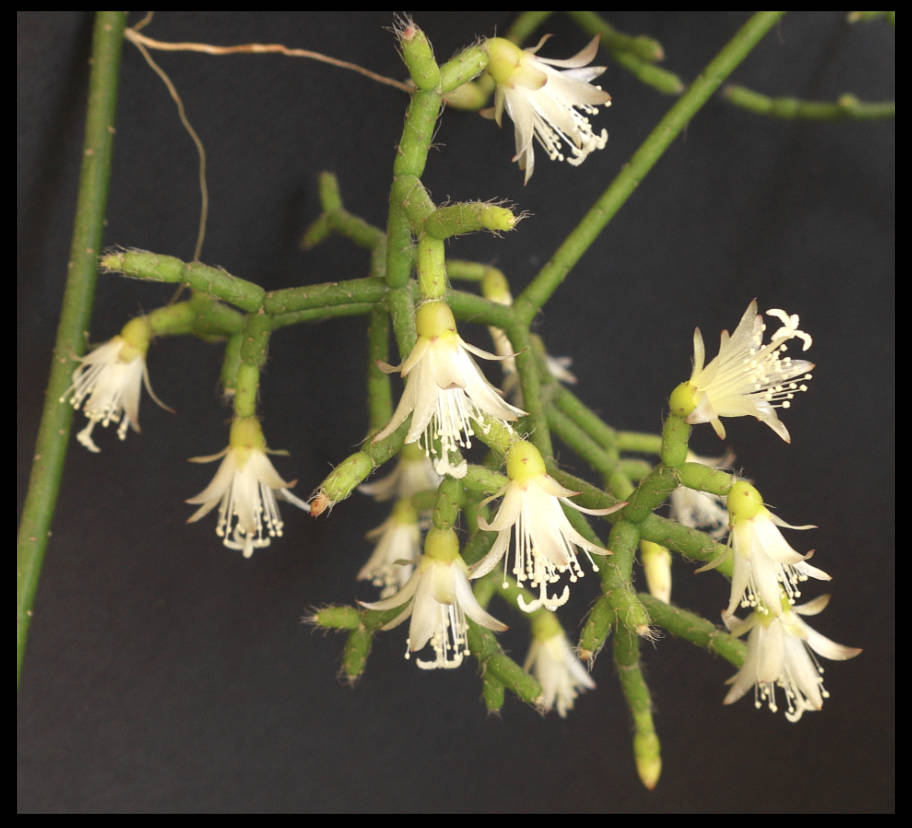Rhipsalis.
Family Cactaceae > Subfamily Cactoideae > Tribe Rhipsalideae.
The 30 – 40 species of Mistletoe Cactus mostly come from South and Central America.
The majority are epiphytes while a few grow on rocks or the ground.
Most of the epiphytic Cactaceae are Rhipsalis species.
Some are succulent while others are not.
The morphology of Rhipsalis is very variable.
Starting as small, shrubby plants they develop erect branches that mostly become pendant.
They typically have branched, cylindrical stems that are segmented.
A few have unbranched stems while most branch dichotomously or into whorls of up to 8.
Each branch may then branch resulting in increasingly bushy stems.
Some have stems that are 3 to 6 angled, flattened like a leaf or club-shaped.
Some plants have cylindrical primanry segments that branch into angled secondary segments.
Segments may all be the same length but they usually get progressively shorter with each division.
Stems can develop aerial roots.
Some plants are dwarf cushions a few cms high.
Others have stems up to 2 or 3 m long.
Stem thickness varies from 2 to 12 mm while flower-bearing segments can be 1 to 2 mm.
Green stems may have brown, red or purple tints while others are all red or purple.
There may be tiny scale leaves.
There are areoles that may be concentrated at the segment ends.
They typically have woolly hairs or a few bristles that fall off as the segments age.
Some only have small scales.
Spines are usually absent or only present on juvenile segments.
The solitary or occasionally paired, stalkless flowers can be lateral or terminal.
The buds can be perpendicular to the stem or oblique and the flowers erect or pendulous.
The bell-shaped flowers are mostly around 1 cm long with a few up to 2 cm.
The perianth has 4 to 18 mostly undifferentiated tepals.
Most are white and a few have a red tinge at the tip or base.
A few species have cream, yellow or red tepals.
There is an annular disc around the ovary.
There are 4 to 60 stamens that are shorter than the tepals.
Most are all white but some have a red, yellow or orange base while a few are all red.
The ovary is inferior and may be surrounded by receptacular tissue (pericarpel) from the stem.
Some species have a hypanthium of fused tepal bases.
The single style has 3 to 5 stigmas both mostly white but occasionally red.
The fruit are almost globular berries up to 10 mm across.
The green fruit mature to white, yellow, pink or red.
Some have a translucent appearance.
Each has 10 to 100 dark brown or black seeds.
Including species, forms and cultivars about 40 different ones are periodically available in Australia.
In looking at photos on the internet I noted plants with very different features under the same name.
It is noted in an article on the Rhipsalis.com website that many or most are misnamed, even sometimes in Botanic gardens.
J.F.


